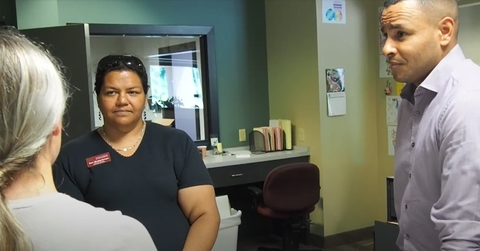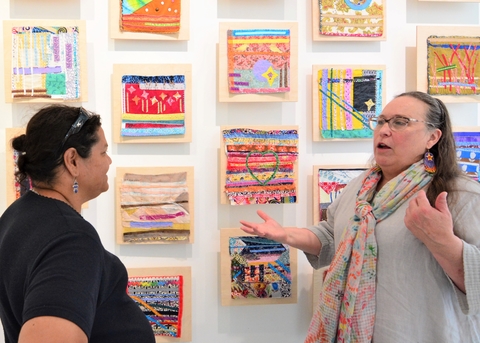Minnesota’s headwaters region includes five counties and three tribal communities. It’s the interdependence of these rural places, with Bemidji as an economic hub, that got the gears turning for Rani Bhattacharyya, University of Minnesota Extension community economics educator.
Those gears were turning for Antonio Franklin, too. An economic development planner for the Headwaters Regional Development Commission (HRDC), Franklin knew that, for example, when people come into Bemidji for their health care services, they also shop, eat and sometimes stay overnight.
But the details on that were slim. Conversations between Franklin and Bhattacharyya, three years later, have resulted in a mobile data analysis for Bemidji, which will eventually yield a trade map that identifies markets and opportunities for the region.
“It’s an opportunity to really understand the foot traffic,” says Franklin. “It’s been great to tap into the Extension resources and look at ways to support our business community and potentially show the economic impact of our indigenous communities.”
Indigenous communities and business communities are by no means mutually exclusive.
“This data can help the tribes understand economic development opportunities as well,” says Bhattacharyya, noting the importance of understanding the spending power of indigenous communities, which are HRDC stakeholders.
Artistry meets opportunity
Bhattacharyya recently interviewed rural Native entrepreneurs to better understand factors contributing to their success for the Minnesota Indigenous Business Alliance (MNIBA).
Jamie Aubid, owner of Mesabi Painting and Decorating and member of the Mille Lacs Band of Ojibwe, serves home and cabin owners in the Grand Rapids area, corporations, hotels and builders. He attributes much of his success to word-of mouth, demonstrating the nature of a rural business.
“If the community is not behind a project, I don’t care what kind of business it is or how great the idea, it will not thrive,” says Pamela Standing, MNIBA’s executive director.
The Federal Reserve Bank of Minneapolis reports that the sectors Native American entrepreneurs enter tend to have lower gross receipts and employ fewer people. Aubid fits that description but exceeded his own income expectation last year by 60%, provided for his family and contributed to the local economy.
Non-profit entrepreneurs
An Extension Regional Sustainable Development Partnerships project with the University of Minnesota Lake Itasca Biological Station also engaged Native artist-entrepreneurs. The Big River Continuum cultivates creative exchanges connecting Mississippi River communities.
Karen Goulet, program director of the center’s Miikanan Gallery in Bemidji’s Watermark Center, is an Anishinaabe (Ojibwe) artist exploring memory, identity and environment. She is a Big River artist-in-residence.
Bhattacharrya, along with Goulet, Extension educator Shirley Nordrum and others, saw the river’s many branches as a metaphor for this project, which involved artists from White Earth all the way to the Mississippi Delta.
“We’ve been doing trade — exchanges of not only money but of helping one another to thrive — for centuries,” says Goulet.
Goulet met with University of Minnesota faculty to share learning. “The health of our watersheds and waterways is vital to economic growth, progress and healing in this region — one of the dominant starting points for the Mississippi River,” she says.
“We must honor the potential of all residents in the state to become entrepreneurs,” says Bhattacharyya. “If we don’t, we constrain our ability to realize their full potential and the potential of all of us.”



